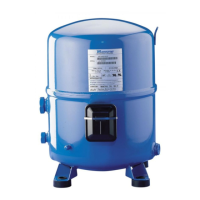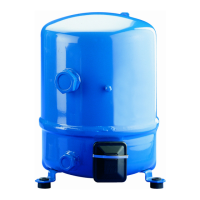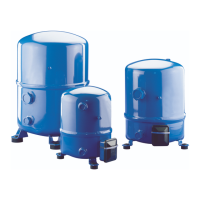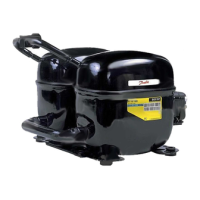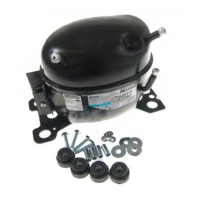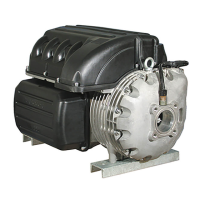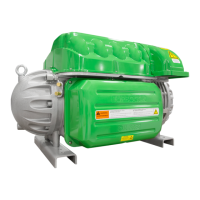Application guidelines
19FRCC.PC.002.A4.22
System design recommendations
Cycle rate limit
No more than 12 starts per hour (6 when a soft
start accessory is used) are allowed. A higher
number would reduce the service life of the
motor-compressor unit. If necessary, use an an-
ti-short-cycle timer within the control circuit.
The system must be designed in a way that guar-
antees minimum compressor running time so as
to provide sucient motor cooling after start-up
as well as proper oil return from the system to the
compressor.
A 5-minute delay between two successive com-
pressor starts is being proposed herein, with a
2-minute runtime after each start and a 3-minute
idle time between each stop and start.
Only during the pump-down cycle may the com-
pressor run for much shorter intervals.
Liquid oodback during
operation
O-cycle migration
Liquid refrigerant control
and charge limits
During normal and stable system operation,
refrigerant will leave the evaporator in a super-
heated condition and enter the compressor as a
superheated vapour. Normal superheat values at
compressor suction are 9 to 54°F. However the
refrigerant leaving the evaporator can contain
an amount of liquid refrigerant due to dierent
reasons:
• wrong dimensioning, wrong setting or malfunc-
tion of expansion device
• evaporator fan failure or frosted-up evaporator
coils.
In these situations, liquid refrigerant will continu-
ously enter the compressor. The negative eects
from continuous liquid oodback are:
• permanent oil dilution
• in extreme situations with high system refriger-
ant charge and large amounts of oodback,
liquid slugging could occur.
During system standstill and after pressure equal-
isation, refrigerant will condensate in the coldest
part of the system which may be the compressor
when it is placed in a cold environment. Ulti-
mately, the full system refrigerant charge can
condensate in the compressor crankcase. A large
amount will dissolve in the compressor oil until
the oil is completely saturated with refrigerant.
When the compressor is started, the pressure in
the crankcase decreases rapidly and refrigerant
will violently evaporate, causing the oil to foam
(boiling). Both dilution and foaming reduce the
lubrication properties of the oil. In extreme situa-
tions liquid could enter the compressor cylinders
with immediate compressor break-down as a
result.
Refrigeration compressors are basically designed
as gas compressors. Depending on the com-
pressor design and operating conditions, most
compressors can also handle a limited amount of
liquid refrigerant. Maneurop® NTZ compressors
have a large internal volume and can therefore
handle relatively large amounts of liquid refriger-
ant without major problems.
However even when a compressor can handle
liquid refrigerant, this will not be favourable to its
service life.
Liquid refrigerant will dilute the oil, wash out the
bearings causing wear and eventually seizure.
Furthermore, high oil carry over will cause lack of
oil in the sump.
Good system design can limit the amount of liq-
uid refrigerant in the compressor, which will have
a positive eect on the compressor service life.
Liquid refrigerant can enter a compressor in var-
ious ways, with dierent eects on the compres-
sor as described in the following points.
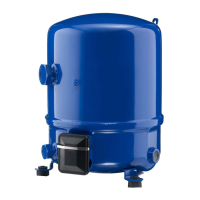
